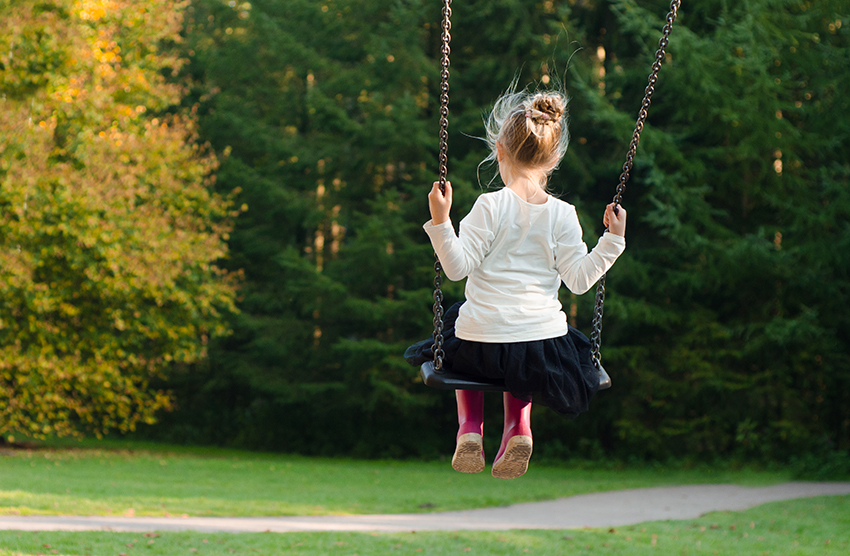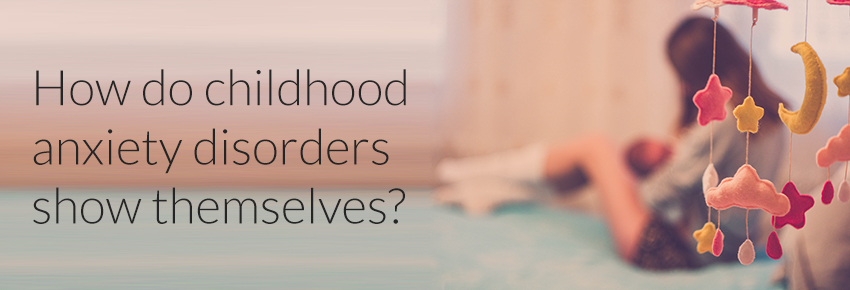How do childhood anxiety disorders show themselves?
In this series of blogs, Dr Sabina Dosani explores anxiety in children and adolescents. Here we look at the signs parents may want to look out for in their children.
There are several anxiety conditions that children and teenagers can experience and often the symptoms are very different to the symptoms that adults might experience. It’s also true that the symptoms and signs between children can be very different, so I would always tell parents to know what is ‘normal’ for your child and trust your instinct if you think something is wrong.
Common symptoms of anxiety in children?
Some children may feel low or sad. They might lose their appetite or find it difficult to sleep. Others may become so fearful, tense or panicky, they experience strong bodily felt sensations which can lead to panic attacks. Young people will be aware that they feel sick, tense, shake, sweat or have palpitations and breathlessness, but may not call this panic.
Anxiety can leave a young person with thoughts that life is not worth living. Others think about running away, stop going to school and may become housebound, some consider taking an overdose or of harming themselves by other means.
A young person’s family and social background influences vulnerability to anxiety disorders. For example, children are more likely to have an anxiety disorder if their parents have anxiety disorders.
Different types of anxiety disorders
Generalised anxiety disorder
Children and young people with generalised anxiety disorder have recurrent worries about lots of things, including past conversations or actions, future events, school, family health, their own health, competence in sports or school work, and natural disasters. These worries are accompanied by a sense of restlessness or feeling on edge, being easily tired, difficulty concentrating, irritability, muscle tension, and sleep disturbance.
Selective mutism
Typically, children can talk freely at home but are silent in other settings like school. It is a type of social anxiety. Selective mutism is different from shyness. Shyness is usually part of temperament or personality. All of us have a degree of shyness, the tendency to withdraw from unfamiliar people or circumstances. Shyness is largely heritable and is not a mental illness. Unlike people who are just shy, children with selective mutism are not able to communicate with others effectively and miss out on educational and social opportunities. It impairs many aspects of a developing child’s life.
Phobias
A certain amount of fear is healthy and in fact desirable. Fearless children get into more scrapes and take more risks than those who are kept out of harms way by caution. A fear becomes a phobia when it is excessive, arises in response to imaginary dangers and is accompanied by avoidance that impacts on a child’s life.
Obsessive compulsive disorder
1 in 100 children and teenagers suffer from obsessive-compulsive disorder (OCD). A person with obsessive thoughts, who responds to these with the ‘ritual’ of carrying out specific compulsive acts, could be suffering OCD. Among adults with OCD, one third to one half develop the disorder during childhood or adolescence. Most clinicians do not see that many children with OCD, so we suspect a large number must be suffering in silence.
Some people can have thoughts and ideas that keep coming into their mind, which can either feel silly or even scary. These are obsessions.
Common obsessions in young people
- fears about dirt or contamination
- feeling angry or violent towards others for no reason
- needing to tell, ask or confess
- thoughts about doing something embarrassing or forbidden
- unwanted sexual thoughts
- worrying about 'evening-up' or if things are symmetrical
- worrying about harm coming to yourself or others
- worrying about religion or morality
Sometimes these thoughts and ideas can leave a young person feeling compelled to do something in response, which can help to relieve the distress or anxiety these thoughts and ideas caused in the first place. These compulsive acts can interfere with the person’s everyday life and leave them troubled.
Common compulsions in young people
- checking
- counting
- hoarding
- ordering
- praying
- repeating
- touching
- washing
Post-traumatic stress disorder
Young people may develop Post Traumatic Stress disorder (PTSD) after having experienced a traumatic event. Examples include car accidents, violence and witnessing natural disasters. The young person can have been involved directly in the traumatic event, or could have witnessed or heard about the event. The event is one that involves intense distress, and fear.
After the event, the young person may experience some of the following:
- recurrent and intrusive distressing recollections of the event, including images, thoughts or perceptions;
- recurrent distressing dreams of the event;
- acting or feeling as if the traumatic event were recurring (e.g. reliving the experience, illusions, hallucinations, and dissociative flashback episodes, including those on wakening or when intoxicated);
- intense distress at exposure to cues that symbolise or resemble an aspect of the traumatic event;
- physiological reactivity on exposure to internal or external cues that symbolise or resemble an aspect of the traumatic event.

Persistent avoidance of things associated with the trauma and numbing of general responsiveness as indicated by at least three of:
- efforts to avoid thoughts, feelings or conversations associated with the trauma;
- efforts to avoid activities, places or people that arouse recollections of this trauma;
- inability to recall an important aspect of the trauma;
- markedly diminished interest or participation in significant activities;
- feeling of detachment or estrangement from others;
- restricted range of affect (e.g. unable to have loving feelings);
- sense of a foreshortened future (e.g. does not expect to have a career, marriage, children or a normal life span).
Persistent symptoms of increased arousal (not present before the trauma) as indicated by at least two of the following:
- difficulty falling or staying asleep;
- irritability or outbursts of anger;
- difficulty concentrating;
- hypervigilance;
- exaggerated startle response.
Separation anxiety disorder
Children with separation anxiety disorder worry about being away from home or about their parents. Children often worry about their parents when they are apart from them. When they are together, children may cling to parents, refuse to go to school, or be afraid to sleep alone. Repeated nightmares about separation and physical symptoms such as abdominal pain and headaches are also common in children with separation anxiety disorder.
Panic disorder
Young people with panic disorder may describe feeling suddenly and overwhelmingly afraid. Some think they are going to go crazy or die. Symptoms of a panic attack:
- Racing or pounding heartbeat
- Chest pain
- Dizziness
- Difficulty breathing
- Tingling hands
- Feeling disconnected from everything or everyone
- A feeling that something unimaginably horrifying is about to happen
- Fear of going mad
- Fear of dying
These attacks come on suddenly and are usually full-blown in 10 to 15 minutes. There are accompanying physical symptoms such as:
- Chest pain
- Dizziness
- Fast heartbeat
- Sweating

Panic Disorder is rare in young children but is more likely to happen to teenagers.
Anxiety disorders are complicated and it is important that your child has access to the care that they need, as early as possible. A Child and Adolescent Psychiatrist will be able to assess and diagnose your child to determine whether they meet the criteria for an anxiety disorder and if there are any ‘comorbidities’ (conditions that exist alongside the anxiety). From here, you can get a clearer idea of the treatment course that will help your child’s specific challenges. In some cases, medication can be highly effective, for others accessing some sort of talking therapy can be the best treatment course.
Just as every child is unique and different, so are the symptoms they may demonstrate. If you have concerns about your child it is worth discussing them with a health professional – if nothing else it will put your mind at rest and help you get on with the job of parenting.
If you would like to talk to someone today about your child, please call 0203 761 7026.
Clinical Partners is the UK’s largest private mental health partnership, helping children, adults, families and organisations nationwide.
Dr Sabina Dosani
Consultant Child & Adolescent Psychiatrist
Dr Sabina Dosani is a highly experienced Consultant Psychiatrist currently working for the Anna Freud Centre looking after Children and Adolescents. She has a Bachelor of Medicine and Bachelor of Surgery as well as being a member of the Royal College of Psychiatrists. Dr Dosani also has a certificate in Systemic Practice (Family Therapy).
Related articles
Does your child have anxiety? Here are our top tips for parents
Anxiety in children – when should you seek help?
How can I help my child with stress and when should I seek professional help?
Anxiety disorder assessments: what to expect from your child’s appointment

